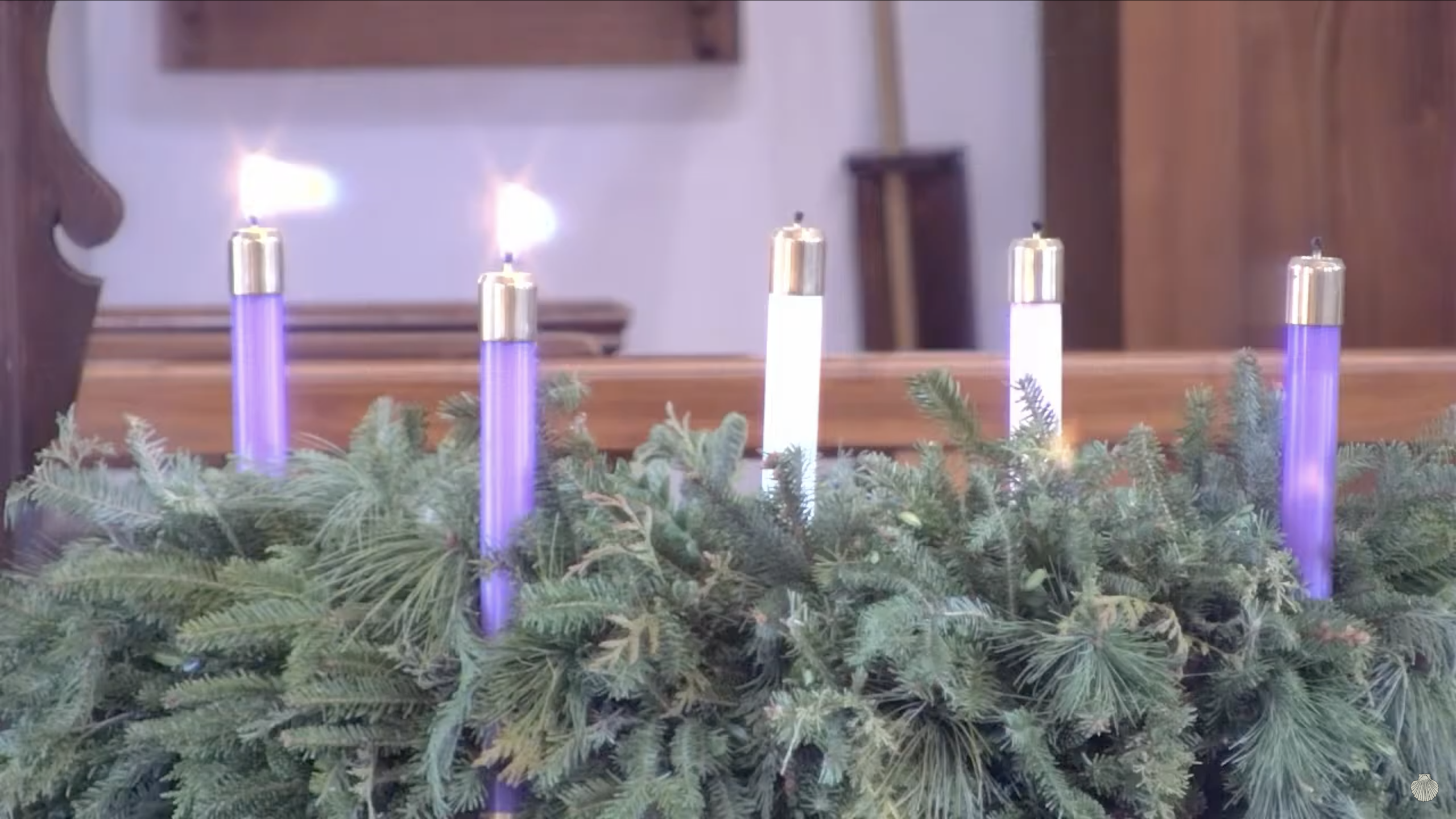 This English Cabinet-style pipe organ has a single 54-note manual keyboard (no pedals) with tracker action and a ‘shove keyboard’ that can be pushed into the case so that the doors may be closed over it, which prevents unsupervised tampering by inquisitive individuals. The instrument has one 8 foot (unison pitch) flute rank, with two draw-knobs that separately access its treble and bass registers, plus three principal/diapason ranks at 8, 4, and 2-foot pitches (unison-octave-super octave). The flute and principal share a common bass.
This English Cabinet-style pipe organ has a single 54-note manual keyboard (no pedals) with tracker action and a ‘shove keyboard’ that can be pushed into the case so that the doors may be closed over it, which prevents unsupervised tampering by inquisitive individuals. The instrument has one 8 foot (unison pitch) flute rank, with two draw-knobs that separately access its treble and bass registers, plus three principal/diapason ranks at 8, 4, and 2-foot pitches (unison-octave-super octave). The flute and principal share a common bass.
 At the time of its consecration in 1850, the church was furnished among other things with a pipe organ. This was the first instrument of its type in Tennessee. James Hall (1803-1888) of Baltimore, Maryland, built the organ for $350. It was shipped by boat to Charleston, South Carolina, and was then ferried to Hamburg, South Carolina (now extinct). After that, Jim Allen of Greene County took his ox team over the storm-washed mountain trails and hauled it to Greeneville. The total shipping cost was $50. P.G. Rosenblatt, a leading musician in Greeneville and a master of instruments, assembled the organ on its arrival and kept it in tune without charge until his death.
At the time of its consecration in 1850, the church was furnished among other things with a pipe organ. This was the first instrument of its type in Tennessee. James Hall (1803-1888) of Baltimore, Maryland, built the organ for $350. It was shipped by boat to Charleston, South Carolina, and was then ferried to Hamburg, South Carolina (now extinct). After that, Jim Allen of Greene County took his ox team over the storm-washed mountain trails and hauled it to Greeneville. The total shipping cost was $50. P.G. Rosenblatt, a leading musician in Greeneville and a master of instruments, assembled the organ on its arrival and kept it in tune without charge until his death.
For over a century, the 1845 Hall Organ was hand pumped. Practically every child in the parish was called upon at one time or another to pump the instrument for services. In 1949, the organ was completely overhauled and an electric blower installed. The hand pump was retained because of its rarity and the fact it may be used during power outages. It is still in excellent condition, has a very sweet tone, and is played on occasion.
 A very interesting story concerning the beginnings of a fund to buy this organ belongs to the narratives passed down through the generations here in Greeneville. It seems that when the little flock decided in the 1840s to build a church in Greeneville, there was aroused in a little girl, then about thirteen, named Mary Lincoln, daughter of Mordecai and Sophia Lincoln, a strong desire to see an organ in the new church. One day while she busied herself knitting, a prominent merchant in town, Mr. William Ramsey Brown, then about thirty, happened by and inquired of Mary what she was doing. She answered, “I am knitting a bag, and when it is finished, I am going to sell it, and the money I get will be the first to start an organ fund for the new church.” Mr. Brown immediately said, “When it is finished, Mary, send it down to the store. I will buy it.” When she had finished her task, she carefully wrapped it and sent it by a little boy to Mr. Brown at his store. After a prolonged absence the little boy returned with the package Miss Mary had entrusted to him. She immediately asked him if Mr. Brown had not been at the store, to which he replied “Yes.” Mary’s heart was broken, because she was certain Mr. Brown had refused to keep his bargain; but lo, to her great surprise when she reopened the package he had placed twenty dollars in gold in the purse. That was the beginning of the organ fund. The romantic touch was added a few years later when in 1852 Mr. Brown took Mary Lincoln as his bride. This became the first wedding held in St. James’ Church.
A very interesting story concerning the beginnings of a fund to buy this organ belongs to the narratives passed down through the generations here in Greeneville. It seems that when the little flock decided in the 1840s to build a church in Greeneville, there was aroused in a little girl, then about thirteen, named Mary Lincoln, daughter of Mordecai and Sophia Lincoln, a strong desire to see an organ in the new church. One day while she busied herself knitting, a prominent merchant in town, Mr. William Ramsey Brown, then about thirty, happened by and inquired of Mary what she was doing. She answered, “I am knitting a bag, and when it is finished, I am going to sell it, and the money I get will be the first to start an organ fund for the new church.” Mr. Brown immediately said, “When it is finished, Mary, send it down to the store. I will buy it.” When she had finished her task, she carefully wrapped it and sent it by a little boy to Mr. Brown at his store. After a prolonged absence the little boy returned with the package Miss Mary had entrusted to him. She immediately asked him if Mr. Brown had not been at the store, to which he replied “Yes.” Mary’s heart was broken, because she was certain Mr. Brown had refused to keep his bargain; but lo, to her great surprise when she reopened the package he had placed twenty dollars in gold in the purse. That was the beginning of the organ fund. The romantic touch was added a few years later when in 1852 Mr. Brown took Mary Lincoln as his bride. This became the first wedding held in St. James’ Church.






